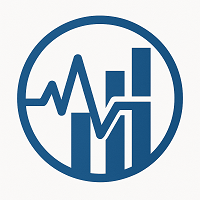Chart & Flowserve Merge: Building an Industrial Tech Supercorp Through Ecosystem Dominance
The industrial sector is undergoing a seismic shift—from fragmented players to vertically integrated ecosystems. Chart Industries' merger with Flowserve isn't just a consolidation play; it's a blueprint for how industrial giants will dominate niche markets in the 2020s. By merging Chart's cryogenic expertise with Flowserve's flow management prowess, the combined entity emerges as a vertically integrated leader poised to control $8.8B in annual revenue, 42% of which comes from high-margin aftermarket services. Let's unpack why this merger signals a new era of industrial capitalism—and why investors should act now.

Ecosystem Design: The Long Range Planning Framework in Action
The Long Range Planning (2021) framework emphasizes that successful industrial ecosystems require three pillars of alignment:
1. R&D Synergy: Combining technical expertise to innovate beyond competitors.
2. Supply Chain Resilience: Streamlining procurement and production to reduce costs.
3. Customer Network Lock-In: Using data and aftermarket services to monopolize client relationships.
Chart and Flowserve's merger checks all three boxes.
1. R&D Synergy: From Parts to Platforms
Chart's compression and cryogenic technologies (critical for LNG, hydrogen, and industrial gases) pair perfectly with Flowserve's flow management systems (used in power plants, chemicals, and water treatment). The merger's crown jewel is their digital predictive maintenance platform, which will leverage the combined installed base of 5.5 million assets to create real-time diagnostics and efficiency tools. This isn't just about selling parts—it's about selling data-driven ecosystems where clients pay premiums for end-to-end solutions.
2. Supply Chain Resilience: $300M in Savings, Not Just Synergies
The merger's $300M annual cost savings target isn't fluff. By consolidating procurement for parts like compressors, pumps, and sensors, the new entity can negotiate bulk discounts with suppliers. Meanwhile, operational efficiencies from shared factories and global logistics networks will reduce overhead. For context, Flowserve's margins (20.8% operating margin in Q1 2025) and Chart's aftermarket dominance (42% of revenue) suggest a 2.0x leverage ratio at close is achievable.
3. Customer Network Lock-In: The Aftermarket Goldmine
The real game-changer? The merged company's 50-country installed base and 42% aftermarket revenue stream. By cross-selling predictive maintenance, spare parts, and digital upgrades, they'll create recurring revenue streams that insulate them from cyclical downturns. Consider this: in energy-heavy sectors like LNG or power generation, clients pay a premium for 24/7 support—something the combined entity can now offer across all its technologies.
Why Now? The Sector is Consolidating
The industrial tech space is ripe for consolidation. Declining capital expenditures in traditional sectors (oil & gas, manufacturing) have forced companies to pivot toward service-based revenue models. Chart and Flowserve's merger accelerates this shift:
- Market Diversification: They now serve 8+ sectors, from data centers (cooling systems) to carbon capture (gas purification).
- Regulatory Tailwinds: Governments are mandating efficiency upgrades (e.g., EU's Green Deal), creating demand for their predictive maintenance tools.
- Competitor Fragmentation: Smaller players can't afford the R&D or scale to compete in this ecosystem arms race.
Investment Thesis: Buy the Merger, Not the Components
The stock math is compelling. Chart shareholders get 3.165 shares of Flowserve per share, valuing GTLS at a 22% premium to its June 1 price. But the real upside is operational leverage:
- Year 1 EPS Accretion: The merger's synergy targets imply immediate profit boosts.
- Dividend Stability: Flowserve's historical dividend (1.2% yield) will anchor investor confidence during integration.
- Long-Term Growth: The 2%+ revenue synergies from cross-selling and digital platforms could make this a decade-long growth story.
Risks? Yes. But the Upside Outweighs Them
Regulatory hurdles and integration delays are real—especially in markets like the EU or China. However, the merger's cash flow resilience (80% of revenue recurring) and diversified client base mitigate execution risk. Even a 6-month delay would barely dent the synergy timeline.
Final Call: This is a Buy-Now, Hold-Forever Play
Chart and Flowserve's merger isn't just about cost-cutting—it's about owning the future of industrial tech. By integrating their ecosystems, they've created a moated, recurring revenue machine in a sector desperate for stability. With a 2.0x leverage target, dividend support, and $3.7B in annual aftermarket cash flows, this is a buy at current levels. Mark my words: in five years, this merger will be remembered as the moment industrial tech went from parts suppliers to platform kings.
Invest now before the ecosystem takes flight.

Comments
No comments yet